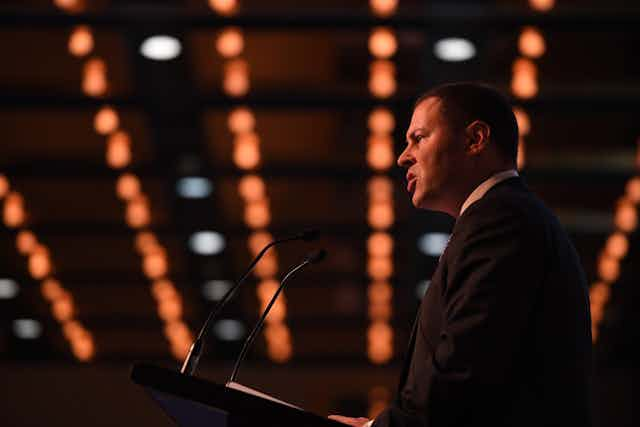Globally in the past seven years, the cost of wind-powered generation has more than halved. Domestically, solar PV costs have dropped more than 50%. By 2020, costs of battery technologies are expected to fall 40-60% and over 70% to 2030.
It is against this backdrop of a declining cost curve for renewables and storage, greater efficiencies that can be found in thermal generation, and the need for sufficient dispatchable power in the system, that we are considering the Finkel Review’s 50th recommendation [the Clean Energy Target] – to which we’ll respond before the end of the year.
- Federal Energy and Environment Minister Josh Frydenberg, speaking at the AFR National Energy Summit, October 9, 2017
You need a managed transition. [The Clean Energy Target] remains a useful tool even if there is an extreme rate of reduction in the price of the new technologies.
- Chief Scientist Alan Finkel, speaking later at the same event
The contrast between Frydenberg and Finkel’s statements has been interpreted as the latter pleading with the former not to cast the Clean Energy Target proposal aside.
But despite the two men’s differing choice of words, they are actually in far closer alignment than many commentators seem to think.
In a wide-ranging speech, Frydenberg put the proposed Clean Energy Target policy into perspective by noting that sacrificing affordability and reliability for lower emissions would risk losing all three.
He emphasised the government’s commitment to well-regulated markets and innovation. On the latter, he noted the dramatic cost reductions that have already happened in wind and solar energy, and are projected to be achieved in energy storage.
He also focused on the need to fix the weaknesses in the National Electricity Market that have been highlighted by both the Finkel Review and the Australian Energy Market Operator.
Frydenberg brought these elements together in stating that the government would consider the 50th Finkel recommendation (which includes the Clean Energy Target) against the backdrop of the falling costs of renewables, the efficiencies available in thermal generation, and the need for dispatchable power.
Sitting in the audience, I heard a clear message from the minister that whatever policy emerges this year must address all of these issues. Having no policy is not an option, despite what you may have read about the government being ready to “walk away” from the Clean Energy Target.
Positive policy
Finkel was similarly strong in his comments on the direction and pace of technology changes in the energy industry. He also made the connection between reducing emissions (via his Clean Energy Target proposal), and ensuring reliability (through his Generator Reliability Obligation). Together, he said, these two features will help to shape the “managed transition” he envisages for Australia’s electricity market.
The language of the politician will inevitably differ from that of the scientist, and it is easy for those with a cynical view to present this as evidence of a schism between the two.
But here is my more positive interpretation. We should not expect the Finkel-designed Clean Energy Target to become a reality. But we can hope for a policy response that fundamentally delivers the same result – affordable, reliable electricity in line with our emissions reduction target.

